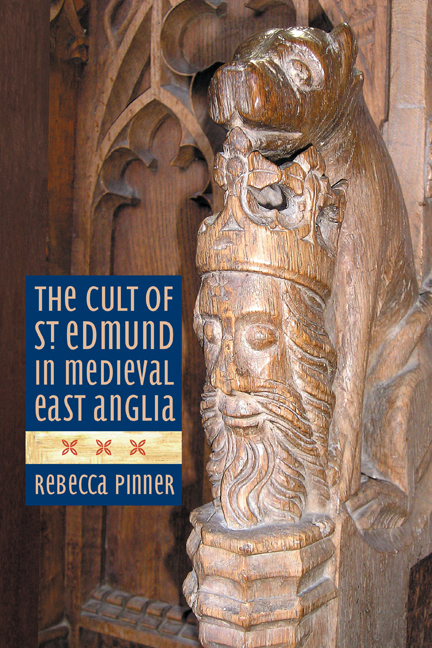Book contents
- Frontmatter
- Contents
- List of Illustrations
- Acknowledgements
- Abbreviations
- Introduction
- Part I Texts and Contexts: the Legend of St Edmund
- Part II Relics, Shrines and Pilgrimage: Encountering St Edmund at Bury
- Part III Beyond Bury: Dissemination and Appropriation
- Conclusion: ‘Martir, Mayde and Kynge’, and More
- Appendix 1 Synoptic Account of the Legend of St Edmund
- Appendix 2 Chronology of Significant Events and Texts Associated with the Cult of St Edmund
- Bibliography
- Index
Chapter 9 - Miracles beyond Bury
Published online by Cambridge University Press: 21 May 2021
- Frontmatter
- Contents
- List of Illustrations
- Acknowledgements
- Abbreviations
- Introduction
- Part I Texts and Contexts: the Legend of St Edmund
- Part II Relics, Shrines and Pilgrimage: Encountering St Edmund at Bury
- Part III Beyond Bury: Dissemination and Appropriation
- Conclusion: ‘Martir, Mayde and Kynge’, and More
- Appendix 1 Synoptic Account of the Legend of St Edmund
- Appendix 2 Chronology of Significant Events and Texts Associated with the Cult of St Edmund
- Bibliography
- Index
Summary
AN additional means of determining the variety of responses to the cult is by considering the miracles with which Edmund is credited. As discussed above, the majority of miracles are associated with Edmund's corporeal relics, both before and after their enshrinement in the abbey church. This is to be expected, given the virtus associated with a saint's remains. However, the narrative of Egelwyn's flight to London in the first decade of the eleventh century, bearing Edmund's remains to safety away from renewed Viking incursions, demonstrates the potency of the relics regardless of their geographical location. Herman relates Edmund's punishment of the arrogant Dane, ‘filled with fierce intent’, who disrespectfully approached the feretory and attempted to remove the pallium as the relics lay in their temporary home in St Gregory's church, London. The man was struck blind, but quickly repented, whereupon his sight was restored. According to Herman, Aelfhun, bishop of London (c.1002–c.1015), was so impressed by the miracles wrought by Edmund during his London sojourn that he attempted to translate the body from St Gregory's to the episcopal seat of St Paul’s. However, despite Egelwyn's ability to move the feretory with ease, the bishop and his helpers were unable to lift it, as ‘although his devotion was good, such an intention was at odds with the will of the saint’. Yarrow suggests that this miracle should be read in the context of furta sacra, or relic thefts, in which the ability to translate the saint to a new location was taken as an indication of his or her silent assent. In contrast, this miracle indicates Edmund's unwillingness to be relocated to St Paul's and speaks instead of his desire to return home to his own kingdom. Yet ultimately this display of saintly homesickness demonstrates that Edmund's miracle-working ability was not constrained by the location of his relics, whilst simultaneously underlining the particular virtus associated with his remains.
Secondary relics associated with Edmund were also credited with manifesting miraculous abilities, such as his banner, borne before the victors at the battle of Fornham in 1173, or an arrow reputedly used at the martyrdom which thwarted attempts to remove it from its enshrined position in St Edmund's church in London.
- Type
- Chapter
- Information
- The Cult of St Edmund in Medieval East Anglia , pp. 181 - 192Publisher: Boydell & BrewerPrint publication year: 2015

